09. Long Straddle and Short Straddle: How to Play Them and Trade Dynamics

A non-directional strategy is one in which the trader is unsure of which direction the market will move. However, he knows that in whichever direction the market moves, the move will be explosive. The market will cover very large distances in a short period of time. Such a scenario occurs when there is an event like the annual budget, credit policies, elections, or corporate earnings. Just ahead of the event, the market is pregnant with expectations, with no one knowing the event's outcome. Such events are leveraged by taking non-directional option strategies.
The most common option strategy in such an event is the Straddle.
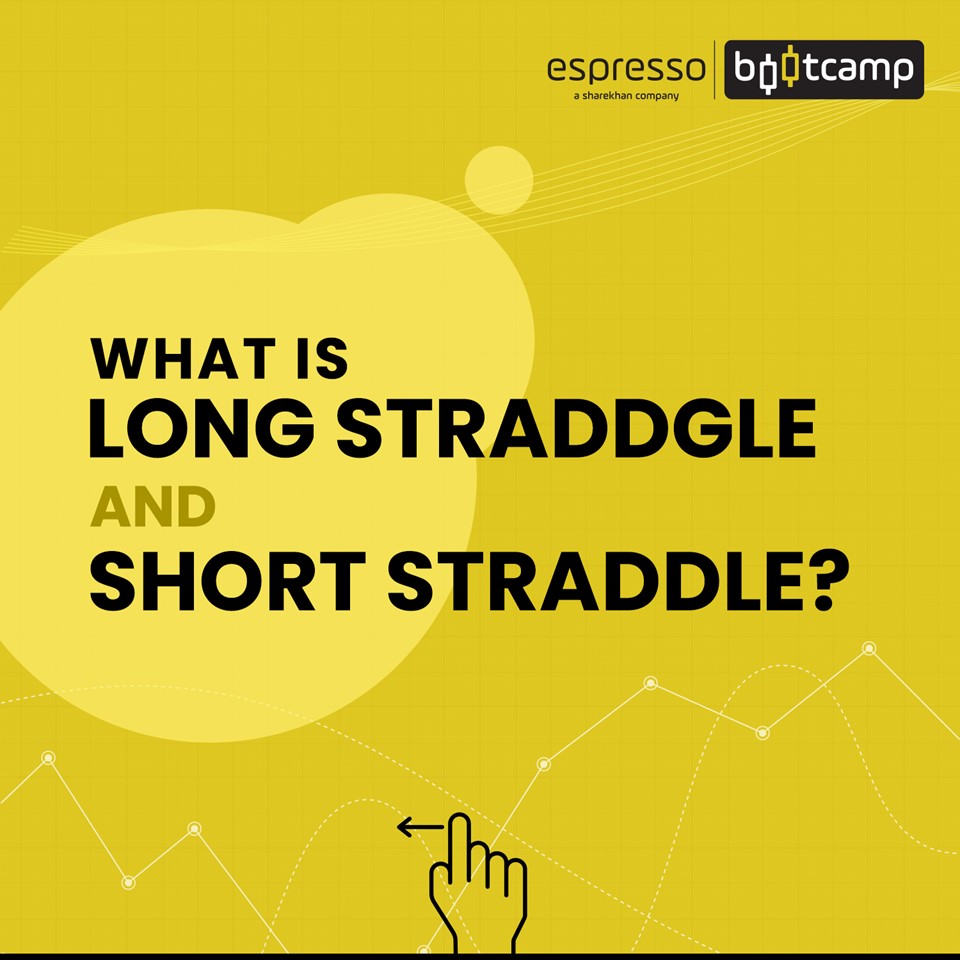
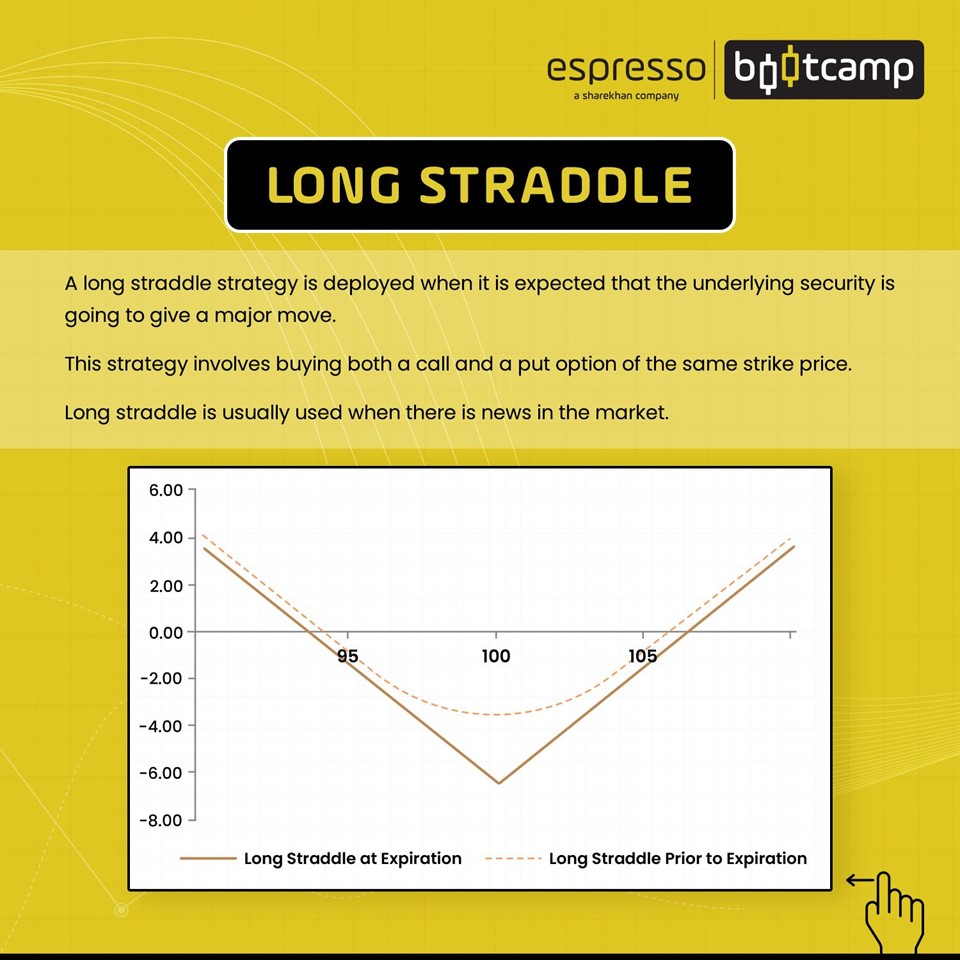
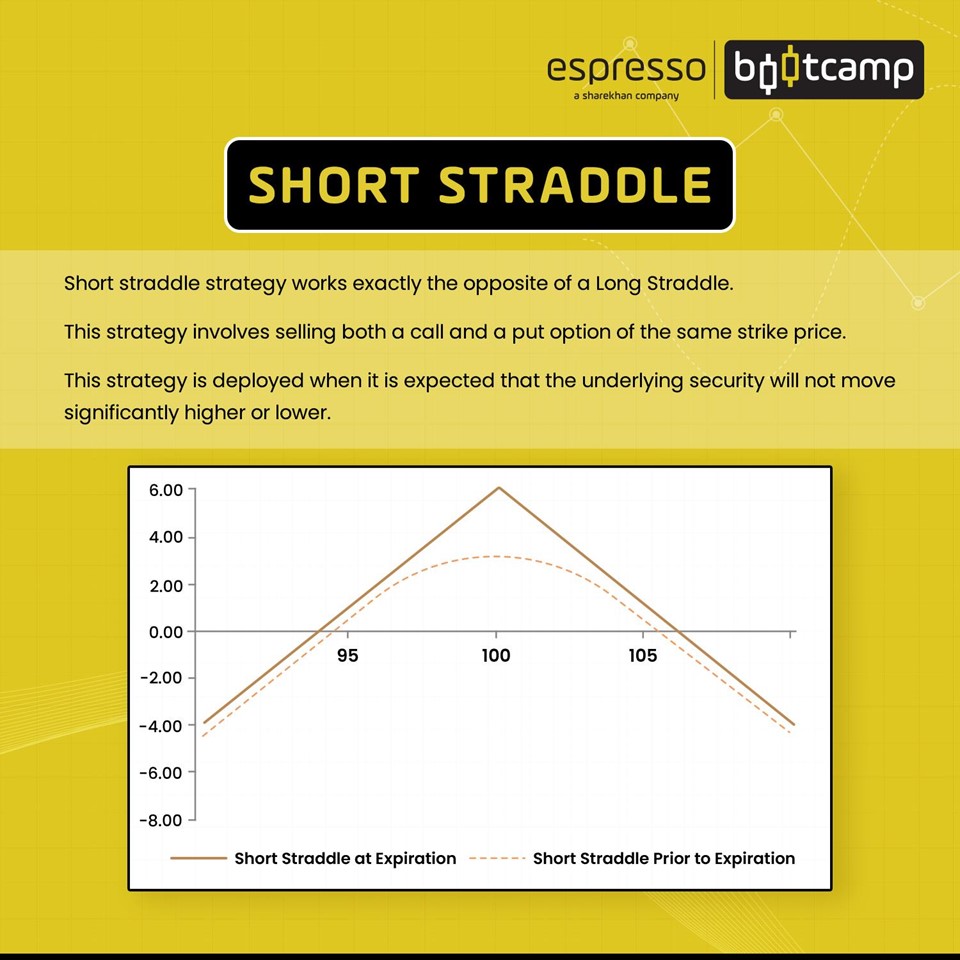
What Is a Straddle?
A straddle is a neutral options strategy that involves simultaneously buying a call and a put option of the same underlying having the same strike price and the same expiry date.
When both the call and put options are bought the strategy is also called a Long Straddle.
The trader will profit from the strategy only if the market or the underlying moves sharply before the expiry date. The move has to be greater than the cost of buying the straddle.
Long Straddle Payoff Diagram
A long straddle can be better understood using a payoff diagram.
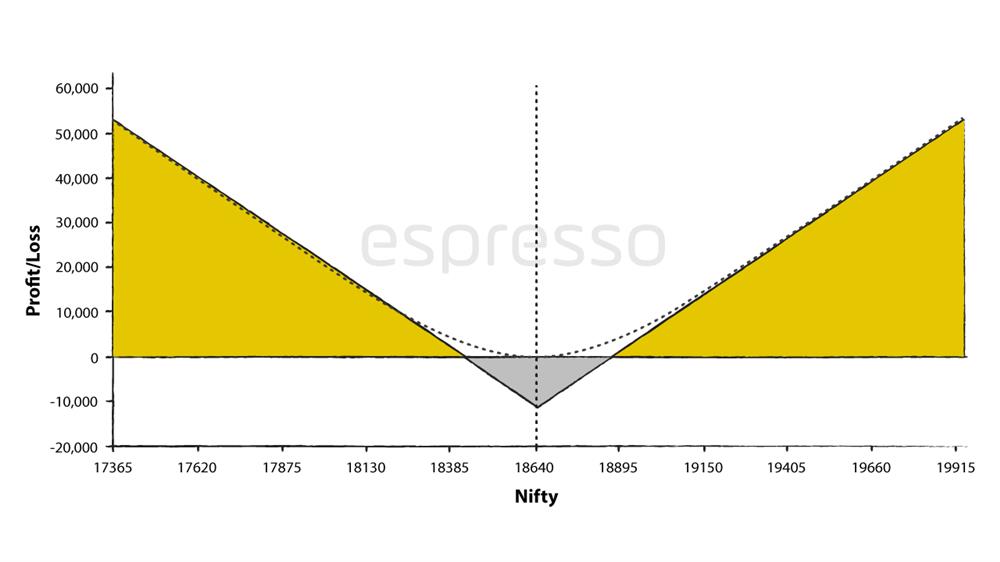
The payoff diagram shows the components of the straddle – a Long Call and a Long Put.
Let’s take this example. Nifty is now trading at 18,646. Hence, the nearest at-the-money (ATM) strike price is 18,650.
A long straddle is created by buying a Nifty August 08 DEC 18,650 CEfor Rs 128.9 and a Nifty 08 DEC 18,650 PEfor Rs94.3.
Note that the underlying instrument – Nifty, expiry date – DECEMBER 08, and strike price – 18,650 of both the call and put options is the same.
Trade Dynamics
The cost of buying the straddle is Rs 128.9 + Rs 94.3 = Rs 223.2 for one unit of Nifty.
For 1 lot of Nifty (50 units), the cost is Rs 11,160 plus taxes and brokerage. This is also the maximum loss the trader can incur by taking this trade.
Note this peak loss is possible if the market closes exactly at the strike price of 18,650.
The capital required to take this trade is also equal to the maximum loss, that is, Rs 11,160.
The trade will be profitable only if Nifty moves by a distance of the cost on either side.
Thus, the breakeven on the long side is 18,650+128.9 = 18,873.
And the breakeven on the lower side is 18,650-94.3 = 18,427.
The profit potential is virtually unlimited so long as the price moves beyond the breakeven.
This is a risk-defined strategy where the trader knows upfront the maximum loss he will incur by taking the position.
Greeks in Long Straddle
A long straddle strategy is considered to be a Delta Neutral strategy. Since the delta of the ATM long call (+50) will cancel the delta of the ATM long put (-50), the net delta of the strategy is 0.
The other Greek to be considered when creating the strategy is Theta. If the days to expiration are close, Theta will impact the strategy's profitability. But if the expiration day is far away, Theta will have minimal impact.
Depending on the gravity of the event, traders pick up their expiry date. For example, if Election Day or Budget Day is closer to the present expiry date, traders will take trades in the next expiry since the event's impact will be visible for days.
Volatility plays an important part in deploying the strategy. Long straddles are taken when volatility is low, which keeps premium prices low; thus, the cost of buying the straddle is low. A low volatility environment offers a good risk-reward straddle trade.
But at the same time, a low volatility scenario suggests that the market is not expecting much from the event. In other words, it is more likely to be a non-event, and the underlying will not move much.
Short Straddle
When a trade is formed by selling an ATM call and put option of the same underlying strike price and expiry date, it is called a Short Straddle.
It is the opposite of a Long Straddle trade and has a payoff diagram that is a mirror image of a Short Straddle.
Payoff diagram of a short straddle
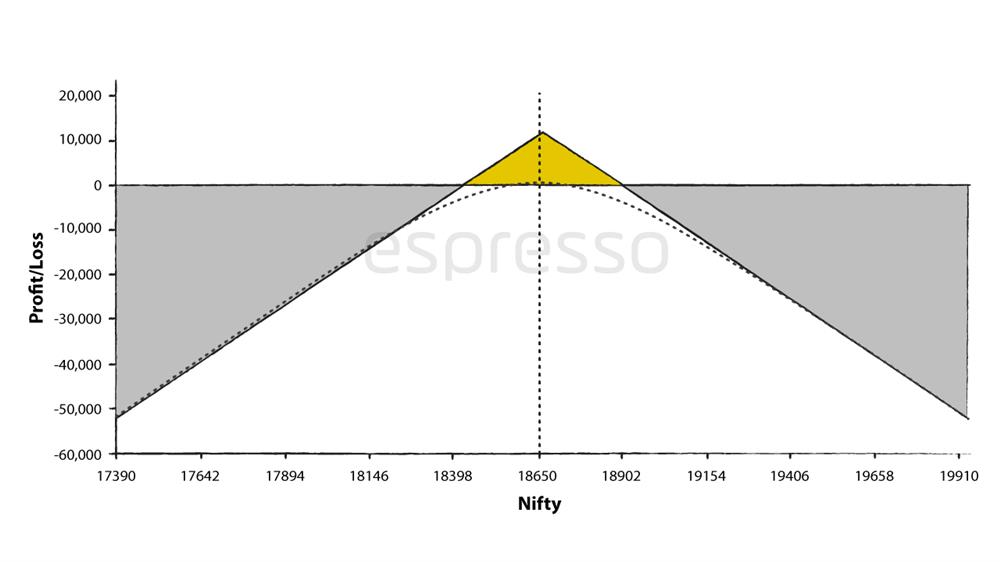
A short straddle in Nifty was created when the market was at 18,651. The nearest strike to be taken as ATM is 18,650.
Note that the underlying instrument – Nifty, expiry date – December 08th, and strike price – 18,650 of both the call and put options, is the same.
Trade Dynamics
An 18,650 CE is sold at Rs 128.9.
An 18,650 PE is sold at Rs 94.3.
The net premium collected per unit of Nifty is Rs 223.2.
The net premium collected per lot of Nifty (50 units) is Rs 11,160.
Maximum profit in trade = Net premium collected = Rs 11,160.
Note this peak profit is possible if the market closes at the strike price of 18,650.
The margin required for creating this strategy is Rs 1,29,781.
Maximum loss is unlimited.
The trade will be profitable only if Nifty stays within the cone.
Thus, the breakeven on the long side is 18,650+223.2=18,873
And the breakeven on the lower side is 18,650-223.2= 18,427
The short straddle is a non-directional strategy where the potential for loss is unlimited and the strategy has limited profit potential.
Greeks in Short Straddle
A short straddle strategy is also a Delta Neutral strategy. Since the delta of the ATM short call (-50) will cancel the delta of the ATM long put (+50), the net delta of the strategy is 0.
The other Greek to be considered when creating the strategy is Theta. A short straddle strategy is all about taking advantage of theta decay. It is among the favourite intra-day trading strategies, where the trader aims to capitalise on the decaying option prices.
Short straddle trades are mostly taken on the current expiry options as they tend to decay faster than later-dated expiries.
Many professional traders use Short Straddle strategies on event days. Normally, as an event day approaches, volatility increases, which results in option premiums rising. In such a scenario, a Short Straddle trade offers a better Return on Investment.
As the premium increases, the breakeven levels will get wider, offering a wider range from which to benefit. Traders, however, take this trade to benefit from the volatility after the event.
Volatility plays an important part in this strategy. The higher the volatility as measured by the Implied Volatility Rank (IVR) or Implied Volatility Percentile (IVP), the better would be the Return on Investment in the trade and the wider the breakeven point.
Conclusion
Straddles are one of the simplest strategies and are among the beginners' strategies that budding options traders can get initiation from. Professional traders prefer the short straddle over the long straddle as the probability of success is better in selling options.
Things to Remember
A neutral options strategy involving simultaneous buying of a call and a put option of the same underlying of the same strike price and same expiry date is a long straddle. When the instruments are sold, it is called a short straddle.
Profit will be made from the strategy if the market or the underlying moves sharply before the expiry date.
A long straddle strategy is considered to be a Delta Neutral strategy.
 0
|
0
|
 0
0
 Modules
Modules
 Watch
Watch 
